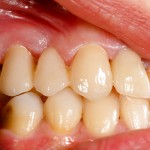
Teeth may be lost due to disease, trauma or development reasons and while not life-threatening can have a negative impact on quality of life. The impact of oral and dental conditions on quality of life can be measured using measured using oral health-related quality of life (OHRQoL) measures. Missing teeth can be replaced using removable partial dentures, conventional fixed-fixed or resin-retained bridges (RRBs) and dental implant-retained prostheses. While clinical outcomes have been researched less emphasis has been place on patient reported outcomes such as OHRQoL.
The main aim of this review was to assess the current literature relating to changes in OHRQoL in patients who had received 2-unit cantilevered RRBs to replace missing single unit teeth.
Methods
Searches were conducted in the Medline, Scopus, PsycINFO, Cochrane Library, Web of Science and clinicaltrials.gov databases. Cross-sectional, retrospective and prospective studies, of either an observational or randomised-controlled trial (RCT) design involving patients aged 18 years and older receiving a 2-unit cantilever RRB and having the outcome assessed with a validated OHRQoL measure were considered. Two reviewers screened and selected studies extracted data and assessed risk of bias. The Cochrane risk of bias tool was used for RCTs and the ROBINS-I tool for non-randomised studies. Certainty of evidence was assessed using the Grading of Recommendations, Assessment, Development and Evaluation (GRADE) Working Group tool. Meta-analysis was not conducted due to marked study heterogeneity.
Results
- 3 studies involving a total of 188 patients were included.
- 1 study was prospective cohort, one an RCT and 1 a case-controlled study.
- None of the included studies was at low risk of bias with 2 having serious risk of bias.
- All three studies used OHIP-49 as a measure of OHRQoL.
- One pre-post study design found provision of 2-unit RRBs significantly reduced the total OHIP-49 score (effect size 0.67), compared with an untreated control.
- One case-control study found no differences in total OHIP-49 between individuals treated with RRB or implant-supported crown.
- A worse OHRQoL was noted by patients experiencing major complications.
Conclusions
The authors concluded: –
this review has found some evidence that the provision of a 2-unit RRB significantly improves OHRQoL, regardless of the reason for the loss of the tooth and that the improvement is similar between different types of fixed restorations. However, the levels of certainty for these findings are low, as the number of studies is so small. Further, well-designed prospective studies are required to make more definite conclusions, and to quantify any potential improvements in OHRQoL from provision of such restorations.
Comments
While the authors have used a good methodological approach to this review both the number and the quality of studies addressing this question is limited. The authors suggest that one potential reason for the low number of papers could be the smaller number of clinical scenarios where 2-unit cantilever RRBs can be utilised. Another reason could be the focus by researchers on clinical outcomes rather than patient focused one. The discussion section of the review examines a number of aspects of the included studies suggesting that the findings are encouraging. However as they point out only 3 small studies are available and the quality of the evidence is low so the findings should be viewed cautiously until additional appropriately sized high quality prospective studies are available.
Links
Primary Paper
Hoyle P, Patel K, Benson PE. Does replacement of missing dental units with resin-retained bridges improve oral health-related quality of life?: A systematic review. J Dent. 2019;91:103209. doi:10.1016/j.jdent.2019.103209
